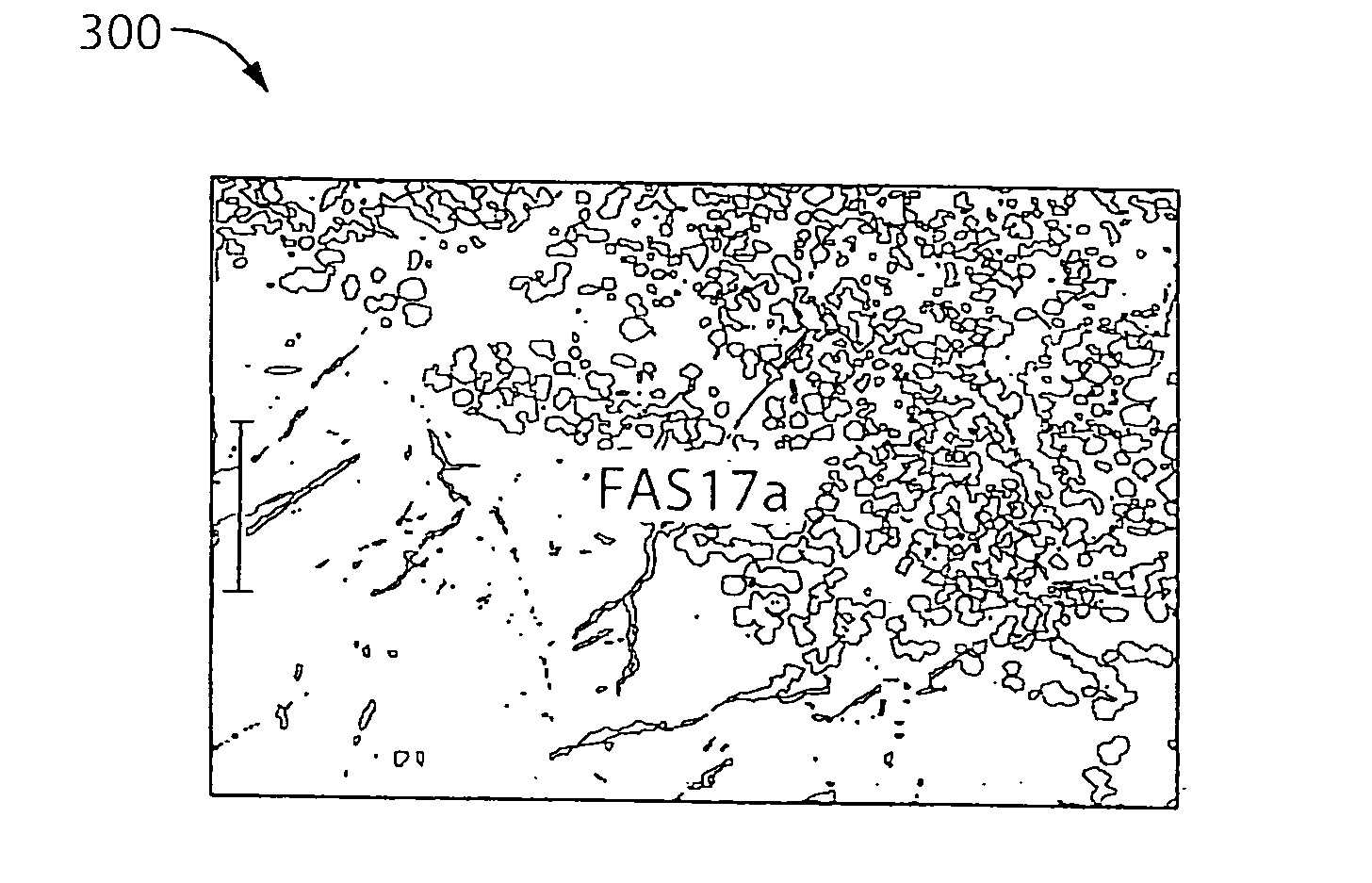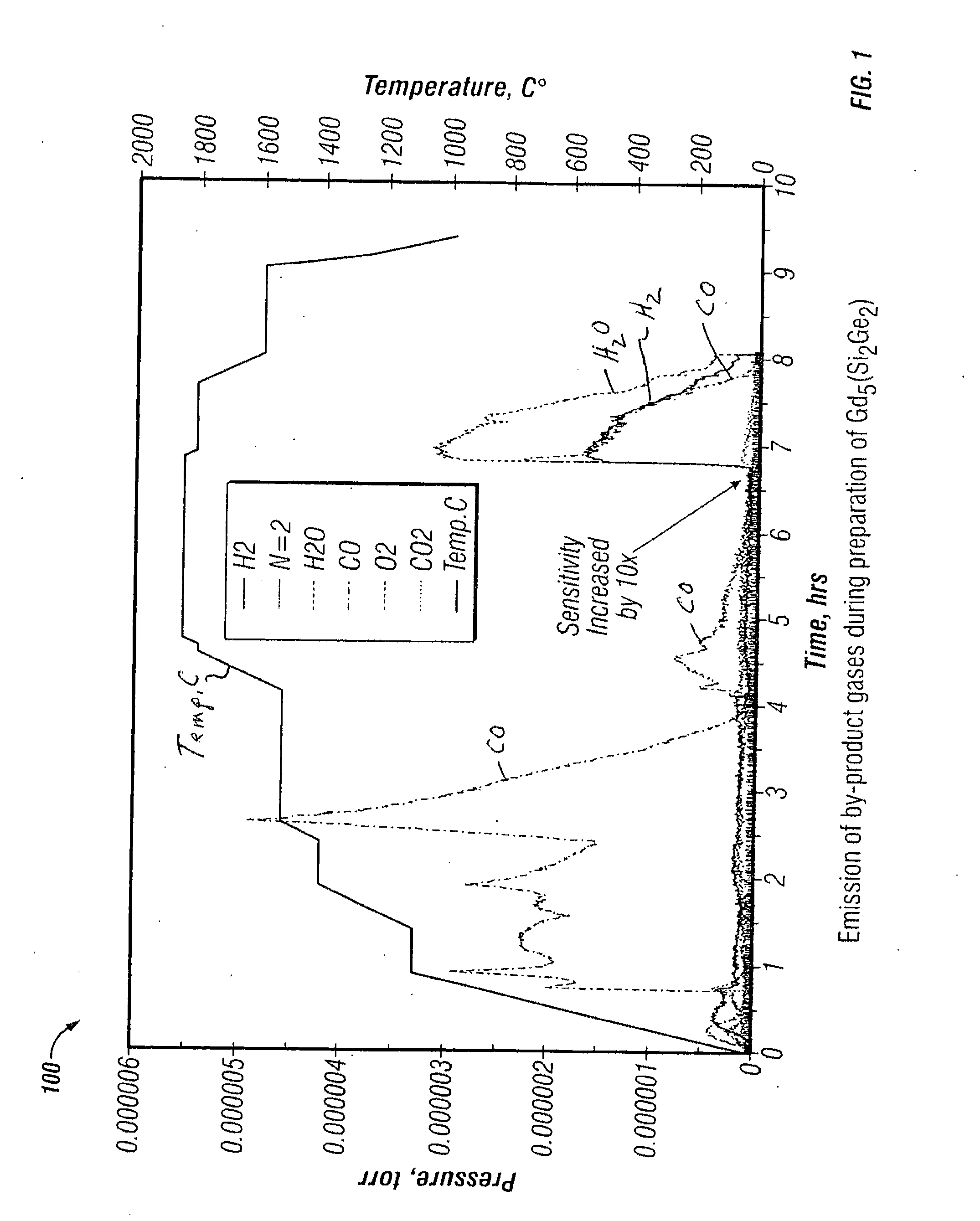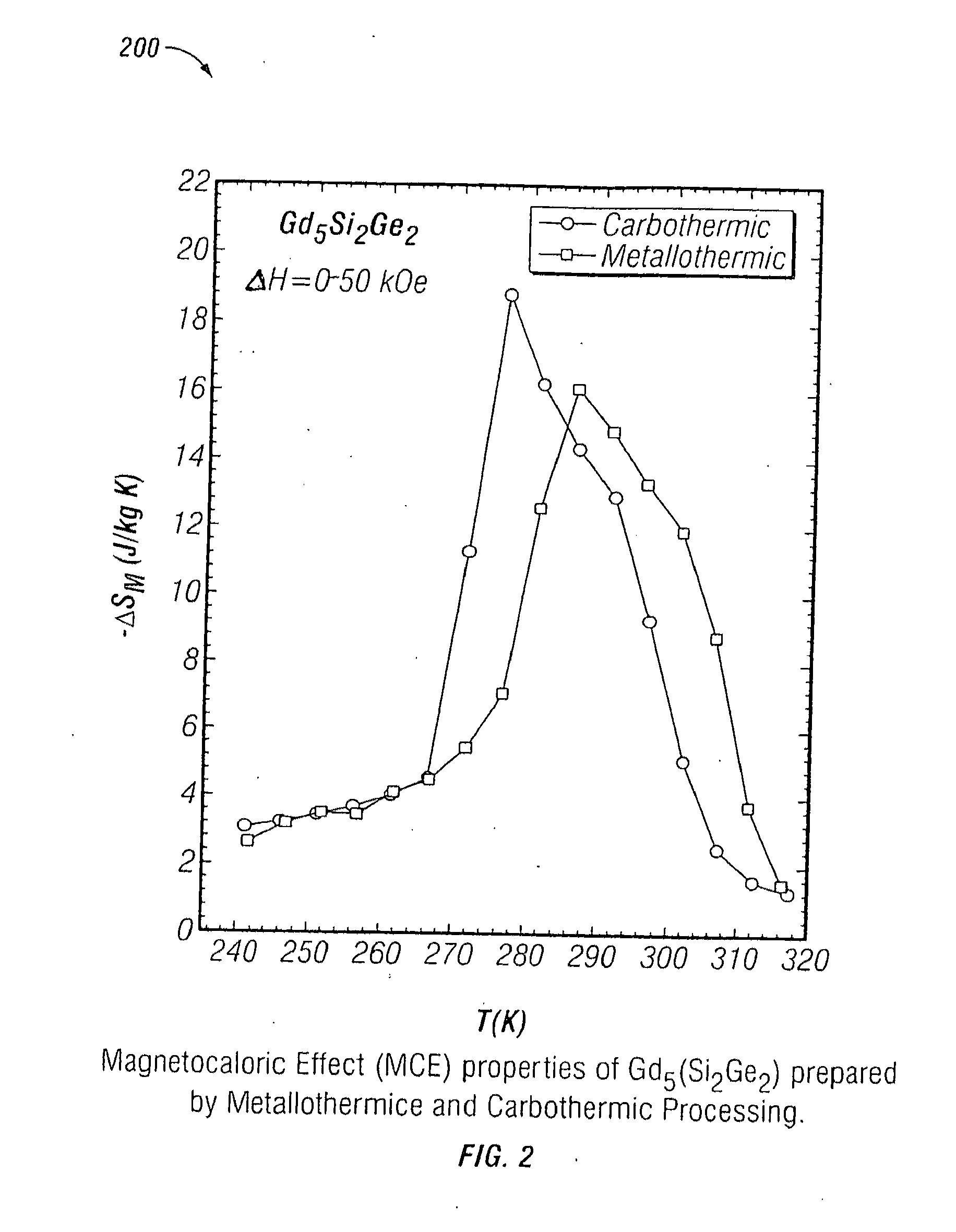Preparation of R5X4 materials by carbothermic processing
- Summary
- Abstract
- Description
- Claims
- Application Information
AI Technical Summary
Benefits of technology
Problems solved by technology
Method used
Image
Examples
example i
[0053]The magentocaloric alloy Gd5Si2Ge2 was prepared by drying the Gd2O3, SiO2 and GeO2 at 800° C. for 24 hours and screening to a diameter 2O3, 16.546 g of SiO2, 26.675 g of GeO2 and 22.117 g of carbon. This amount of carbon corresponds to 97.5% of the stoichiometric amount and was used to insure that almost all of the carbon was converted to CO during the reduction step. Approximately 140 cc of acetone was added to the mixture which was stirred to form a pliable mass which was formed manually into cube shaped briquettes measuring 1 to 1½ cm on a side. The briquettes were dried in air for 2 hours at 100° C. A 66.4 gram portion (36 briquettes) were placed into a 4.8 cm diameter×7 cm high tantalum metal crucible equipped with a tantalum thermocouple well and a lid containing four holes measuring 0.6 cm in diameter.
[0054]The crucible was then loaded into a vacuum furnace equipped with a tungsten resistance heater. A Type C thermocouple (W-5% Re vs. W-26% Re) was inserted into the the...
example ii
[0057]A Gd5Si4 intermetallic alloy was prepared from a carbothermic reduction mixture that contained 50.000 g of Gd2O3, 14.916 g of SiO2 and 10.934 g of carbon (100% of stoichiometric amounts). A 10% excess of silicon as SiO2 was used to compensate for the volatility of SiO. The dried and screened (<212 μm particle diameter) oxides were first thoroughly blended with the carbon and then ˜65 cc of acetone containing 3 wt. % polypropylene carbonate were added and stirred into a pliable mass. Cube shaped briquettes measuring 1 to 1½ cm on a side were formed manually on a Teflon sheet. The 3 wt. % polypropylene carbonate served as a non-contaminating binder and increased the strength of the dried briquettes ten-fold, which greatly facilitated handling and loading of the briquettes into the reduction crucible. A 35.6 gram portion of the dried briquettes were placed into the 4.8 cm diameter×7 cm high tantalum crucible, the lid and thermocouple attached and the assembly loaded into the resi...
example iii
[0060]The carbothermic process was scaled so that 500 to 650 g of the R5X4 alloy was prepared. This preparation was done in a Vacuum Industries Corporation vacuum induction furnace that has a coil assembly that can be tilted. This unit is capable of processing 3000 g of 2.5 cm cube briquettes contained in a tantalum crucible. The unit was equipped with a Eurotherm controller which enabled temperature control within 2° C. at 1850° C. Two Type C thermocouples (W-5% Re vs. W-26% Re) were inserted between the tantalum susceptor and the tantalum reduction crucible. In this particular example, 511 g of Gd5Si4.06 were prepared from a stoichiometric mixture of Gd2O3, SiO2 and carbon according to equation (5) below:
[0061]The reduction charge included 522.505 g of Gd2O3, 140.908 g of SiO2 and 108.273 g of carbon which was the stoichiometric amount. The dried oxides were processed through a 212 μm screen and blended with the carbon utilizing a blender, such as, for example, a Turbula® Powder B...
PUM
| Property | Measurement | Unit |
|---|---|---|
| Temperature | aaaaa | aaaaa |
| Composition | aaaaa | aaaaa |
| Magnetism | aaaaa | aaaaa |
Abstract
Description
Claims
Application Information
 Login to View More
Login to View More - R&D
- Intellectual Property
- Life Sciences
- Materials
- Tech Scout
- Unparalleled Data Quality
- Higher Quality Content
- 60% Fewer Hallucinations
Browse by: Latest US Patents, China's latest patents, Technical Efficacy Thesaurus, Application Domain, Technology Topic, Popular Technical Reports.
© 2025 PatSnap. All rights reserved.Legal|Privacy policy|Modern Slavery Act Transparency Statement|Sitemap|About US| Contact US: help@patsnap.com



